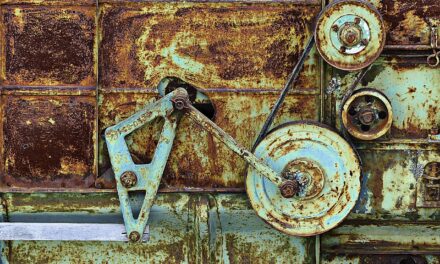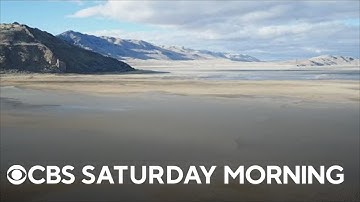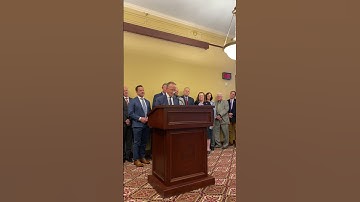Proposed Solutions explained
Great Salt Lake, and more
Saving Our Salt Lake: A Call to Action
The Great Salt Lake is in crisis. Its shrinking waters threaten not only its unique ecosystem, but also the health of our air, economy, and overall environment.
But there’s hope. The Active Climate Rescue Initiative is leading the charge to find innovative solutions to this critical water shortage.
This isn’t just about a lake. This is about saving a vital ecosystem that sustains our livelihoods and the very air we breathe. The Great Salt Lake, like a vast bathtub, relies on water from the entire Great Basin, making this a shared responsibility.
Join us in this fight. Learn how you can contribute to the Active Climate Rescue Initiative and become part of the solution. Together, we can restore the Great Salt Lake and secure a brighter future for ourselves and generations to come.
The Great Salt Lake: A Water Story
TL;DR: The Great Salt Lake is shrinking, and that’s a big problem! Climate change is making it worse, but we can help. Saving water, using it wisely, and working together are key to keeping this important lake healthy.
The Great Salt Lake’s Journey: From Mountains to Desert
Imagine a giant bathtub. The Great Salt Lake is like that bathtub, and the water that fills it comes from all around. Snow melts in the mountains, flows down rivers, and eventually reaches the lake. This is called the water cycle, and it’s how water moves around the world.
But here’s the catch: the Great Salt Lake is in a desert, so it’s already pretty dry. And climate change is making things even drier. We’re getting less snow in the mountains, which means less water flowing into the lake.
Water Woes: What Happens When the Lake Shrinks?
A shrinking Great Salt Lake is bad news for everyone. Here’s why:
- Dust Storms: When the water levels drop, the lakebed dries out. Strong winds can pick up the dry dirt and create huge dust storms, making it hard to breathe and causing health problems.
- Wildlife Trouble: Many birds and animals depend on the lake for food and shelter. A smaller lake means less food and fewer places to live.
- Economy Concerns: The lake helps control the weather and brings tourists to the area. A smaller lake means less tourism, a hotter climate, and potential problems for nearby farms.
Finding Solutions: How Can We Help the Great Salt Lake?
We can all do our part to help the Great Salt Lake. Here are some key ideas:
Water Conservation: Saving Every Drop
- Take shorter showers: Every drop counts!
- Water your lawn less often: Use sprinklers wisely and choose plants that need less water.
- Fix leaky faucets: Even a tiny drip can waste a lot of water over time.
Smart Irrigation: Using Water Wisely
- Drip irrigation: This method delivers water directly to the roots of plants, saving a lot of water compared to traditional sprinklers.
- Water-efficient landscaping: Choose plants that are naturally adapted to the desert and need less water.
Policy Measures: Working Together for Change
- Water-use regulations: States can pass laws to limit how much water people and businesses use.
- Investing in research: Scientists are working on new ways to conserve water and protect the lake.
The Active Climate Rescue Initiative: A Hopeful Solution
The Active Climate Rescue Initiative is a great example of how people are working together to save the Great Salt Lake. This group is focused on finding new ways to solve the water shortage problem in the Great Basin, which includes the Great Salt Lake. They’re working on projects to restore wetlands, improve irrigation, and protect endangered species.
Bringing it All Together: A Shared Responsibility
The Great Salt Lake is a vital part of our environment, and it’s facing a serious threat. But by taking action, we can help turn things around. Conserving water, using it wisely, and supporting policies that protect the lake are all essential steps. Let’s work together to keep the Great Salt Lake healthy and vibrant for generations to come.
More on Proposed Solutions…
- ## SEO Keywords Related to Proposed Solutions & Great Salt Lake
- General
- Great Salt Lake solutions
- Great Salt Lake restoration
- Saving the Great Salt Lake
- Solutions for Great Salt Lake shrinkage
- Great Salt Lake recovery
- Great Salt Lake conservation
- Great Salt Lake water conservation
- Great Salt Lake environmental issues
- Great Salt Lake ecological impact
- Great Salt Lake climate change
- Great Salt Lake sustainability
- Great Salt Lake policy
- Great Salt Lake legislation
- Great Salt Lake funding
- Specific Solutions
- Water conservation for Great Salt Lake
- Water diversion for Great Salt Lake
- Agriculture water use for Great Salt Lake
- Urban water use for Great Salt Lake
- Water infrastructure for Great Salt Lake
- Salt Lake City Great Salt Lake solutions
- Salt Lake County Great Salt Lake solutions
- Great Salt Lake watershed management
- Great Salt Lake habitat restoration
- Great Salt Lake dust mitigation
- Great Salt Lake economic impact
- Great Salt Lake tourism
- Great Salt Lake public awareness
- Organizations & Individuals
- Great Salt Lake Coalition
- Utah Division of Water Resources
- Great Salt Lake Institute
- Salt Lake City Mayor on Great Salt Lake
- Salt Lake County Council on Great Salt Lake
- Governor of Utah on Great Salt Lake
- Utah Environmental Groups on Great Salt Lake
- Great Salt Lake experts
- Great Salt Lake research
- Great Salt Lake scientists
- Location Specific
- Great Salt Lake Utah
- Utah Great Salt Lake
- Salt Lake City Great Salt Lake
- Salt Lake County Great Salt Lake
- Tooele County Great Salt Lake
- Juab County Great Salt Lake
- Utah Lake Great Salt Lake
- Wasatch Front Great Salt Lake
- Great Basin Great Salt Lake
- Western United States Great Salt Lake
- Additional
- Great Salt Lake drying up
- Great Salt Lake dust storms
- Great Salt Lake bird population
- Great Salt Lake brine shrimp
- Great Salt Lake ecosystem
- Great Salt Lake history
- Great Salt Lake recreation
- Great Salt Lake photography
- Great Salt Lake art
- Great Salt Lake future











